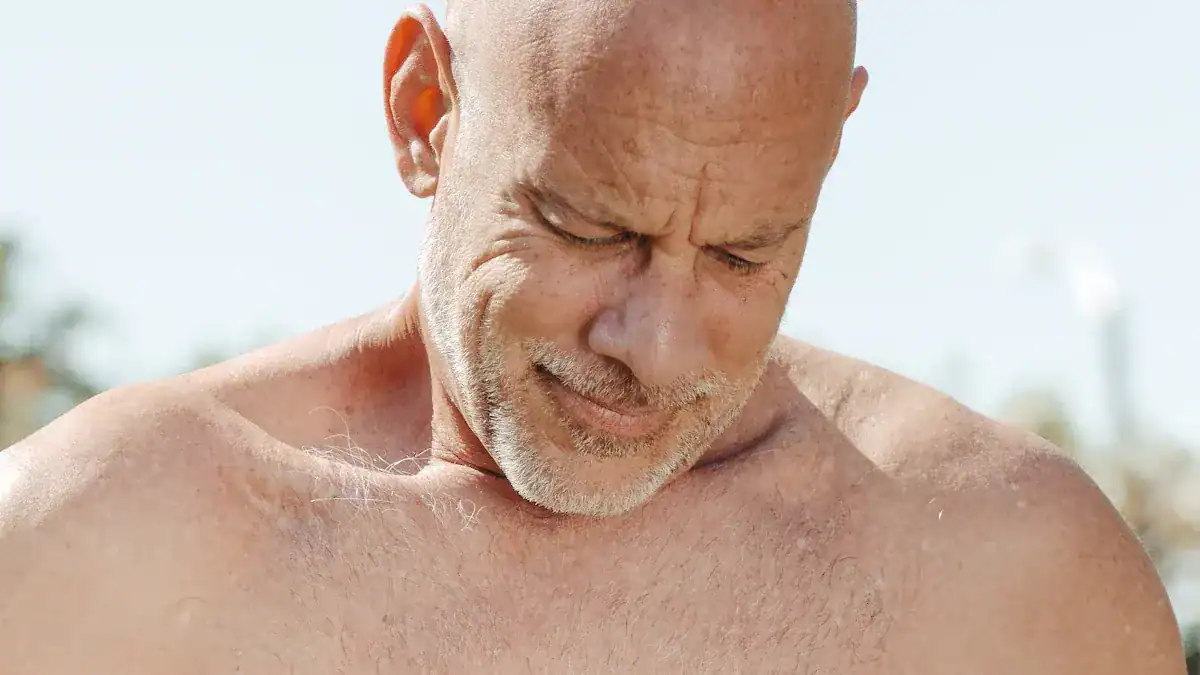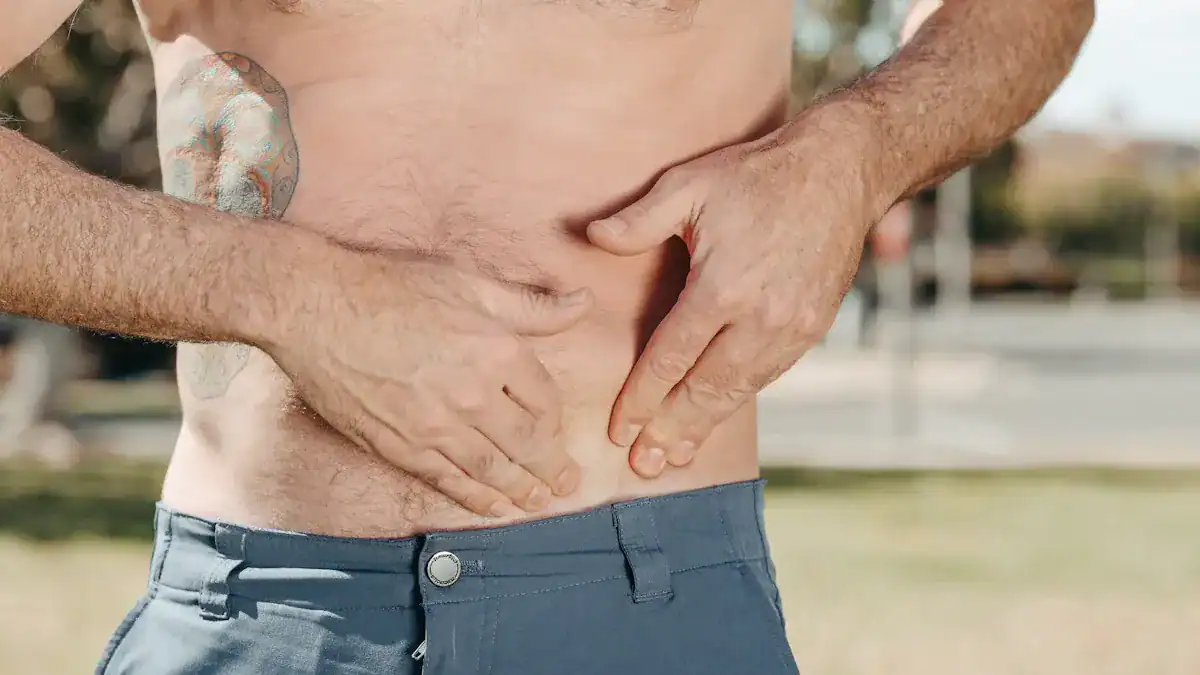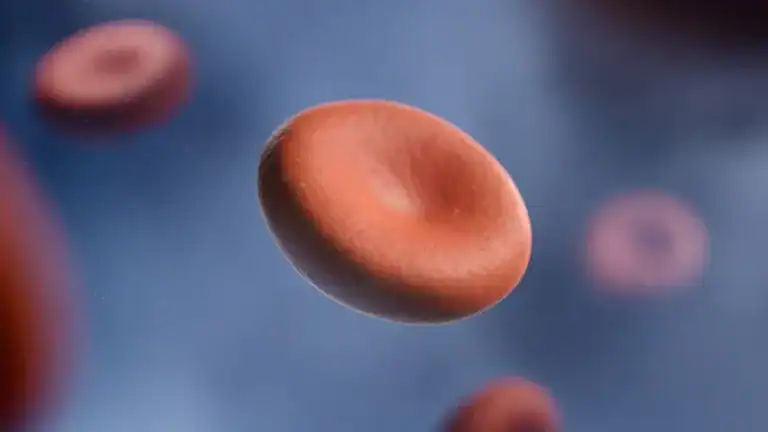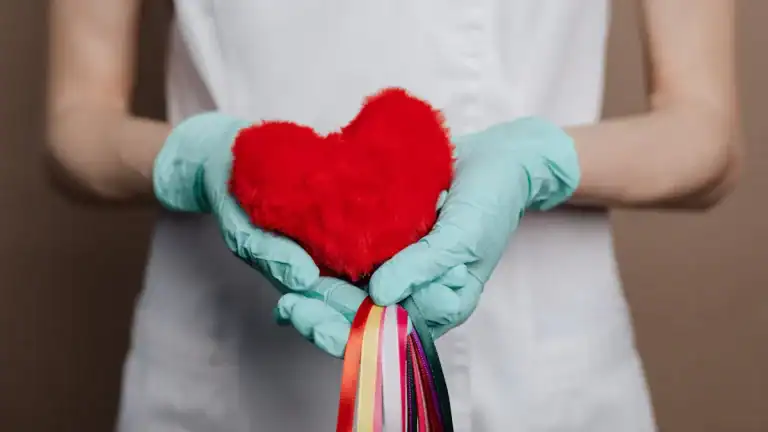
Experiencing pain in your testicles or lower abdomen can be alarming. You need to know some causes are medical emergencies. This post helps you identify these critical situations, so you’ll understand when to seek urgent medical help. Testicular pain and abdominal pain account for a notable percentage of emergency room visits. Testicular torsion is a prime example of the urgent causes that require immediate emergency attention.
Key Takeaways
Sudden, severe pain in your testicle or scrotum is a medical emergency. It can mean testicular torsion. This needs immediate surgery to save your testicle.
Do not ignore pain with nausea, vomiting, or a swollen, red scrotum. These are serious signs. Go to the emergency room right away.
Conditions like incarcerated hernia, kidney stones, and infections can also cause urgent testicular pain. They need quick medical care.
Some testicular pain is not an emergency. This includes pain from varicocele or hydrocele. Still, see a doctor for any new or lasting pain.
Timely diagnosis is very important. Getting help fast for testicular torsion greatly increases the chance of saving your testicle.
Testicular Torsion: An Emergency

Testicular torsion is a true medical emergency. It happens when your spermatic cord twists. This cord supplies blood to your testicle. When it twists, it cuts off the blood supply. This condition causes intense pain to the testicle. You need immediate medical attention to save your testicle.
Testicular torsion affects about 3.8 in 100,000 men under 25 years old. Each year, one in 4,000 males younger than 25 years experiences this condition. It often occurs in neonates and in boys between 12 and 18 years old.
Recognizing Symptoms
You will likely experience sudden severe pain in your scrotum and one testicle. This pain may fluctuate, but it usually continues. You might also notice swelling, especially on one side of your scrotum.
Other common symptoms of testicular torsion include:
Nausea and vomiting.
Belly pain.
One testicle appearing higher than the other.
The affected testicle feels very tender and swollen.
You might lose the cremasteric reflex. This reflex causes your testicle to pull up when you stroke your inner thigh. Its absence is a very accurate sign.
Imagine a 23-year-old male playing basketball. He suddenly feels left groin and scrotal pain. The pain is constant. He also feels persistent nausea and vomits twice. An examination shows mild left lower abdominal tenderness. His left scrotum has mild swelling and redness. His left testicle is slightly fuller and higher than his right. He also has an absent cremasteric reflex. These are classic signs of torsion.
The pain from testicular torsion typically starts suddenly. You might even wake up at night because of it. This abrupt onset of testicular pain is a key indicator. Sometimes, you might feel lower abdominal or inguinal pain instead.
Urgency of Treatment
You cannot delay treatment for testicular torsion. This condition is an emergency. The twisting of testicle cuts off blood flow. This can cause permanent damage to your testicle.
Doctors can save your testicle in about 90% of cases if they perform surgery within six hours of your symptoms starting. This timeframe offers the best chance for testicular preservation. The likelihood of saving your testicle drops sharply after six hours.
Delaying treatment has serious consequences. Look at these statistics:
Treatment Delay | Orchidectomy Rate |
|---|---|
Within 6 hours | 5.9% |
At 24 hours | 82.1% |
Orchidectomy means removing the testicle. If you wait 24 hours, you face a very high chance of losing your testicle. Testicular loss can seriously affect your fertility, especially if you are between 12 and 30 years old. The time from when your pain starts to when doctors untwist your testicle greatly impacts your chances of saving it and your long-term fertility. Do not ignore painful testicles or swollen testicles. Seek help immediately for any suspected torsion.
Other Urgent Causes of Testicular Pain

Beyond testicular torsion, several other conditions can cause testicular pain and require immediate medical attention. These are also urgent causes that you should not ignore. Recognizing their symptoms helps you seek timely care.
Incarcerated Hernia
An incarcerated hernia occurs when tissue, often part of your intestine, pushes through a weak spot in your abdominal wall and gets trapped. This creates a bulge you cannot push back in. It causes significant pain and can cut off blood supply to the trapped tissue. This is a serious condition.
You might notice swelling or a bulge in your groin or abdominal area. You will feel pain and tenderness at the site. Nausea or vomiting can also occur, indicating digestive tract involvement. If the hernia changes color or goes numb, or if you have fever, nausea, and vomiting with hernia pain, seek help immediately. These are signs of a strangulated hernia, which is life-threatening.
Kidney Stones
Kidney stones can cause severe pain that radiates to your lower abdominal area and even your testicles. Many men mistake this for a testicle infection. The pain often starts in your flank or lower abdomen. It can shift to your groin or testicles as the stone moves. You might experience pain with urination, frequent urination, or blood in your urine. Nausea and vomiting are also common. Doctors confirm kidney stones with imaging like a CT scan. Urinalysis showing blood can also support the diagnosis. This type of genital pain needs prompt evaluation.
Epididymitis and Orchitis
Epididymitis is inflammation of the epididymis, a coiled tube behind your testicle. Orchitis is inflammation of the testicle itself. An infection often causes these conditions. You might experience pain and swelling in one or both testicles. The pain can range from a dull ache to sudden, severe discomfort. Your scrotum might appear red and feel warm. You could also have a fever, pain with urination, or discharge from your penis. Sometimes, you see blood in your semen. If left untreated, these infections can lead to abscesses or fertility issues. You need antibiotics quickly to treat the infection.
Testicular Trauma
Direct injury to your testicles can cause severe pain to the testicle. This can happen from falls, assaults, sports injuries, or vehicle accidents. Even minor trauma can be serious if you have an underlying condition like a testicular tumor. You will experience immediate, intense painful testicles and swelling. Severe trauma can lead to complications like testicular rupture, where the testicle tears. It can also cause internal bleeding or even cut off blood supply to the testicle. Any significant injury to your testicles requires urgent medical evaluation to prevent permanent damage. You should not ignore painful testicles or swollen testicles after an injury. This type of genital pain needs immediate attention.
When to Seek Immediate Care
When you experience pain in your testicles or lower abdominal area, knowing when to seek immediate medical help is crucial. Some symptoms are clear signals that you need to go to an emergency room right away. Do not try to wait it out or self-diagnose.
Red Flag Symptoms
You must recognize specific warning signs. These “red flag” symptoms tell you that your condition is an emergency. You need to act quickly.
Here are the critical symptoms that demand immediate medical attention:
Sudden severe pain in your testicle or scrotum. This is a primary sign of testicular torsion.
A hard lump or nodule you feel inside your testicle.
Unexplained weight loss.
Persistent fatigue.
Any changes in your testicle’s size or texture.
A dull ache that comes with a hard testicle. You need a professional evaluation for this.
Injury or trauma to your scrotum. If you have persistent pain or swelling after one hour, seek help.
Pain that comes with nausea or vomiting.
Blood in your semen.
Redness of your scrotum.
If your pain does not go away after one hour.
If you have any of these symptoms, you should not delay. You need to see a doctor immediately.
If it’s sudden onset testicular pain, go to the ER. Do something about it immediately.
Do not delay treatment for acute, severe painful testicles. This can indicate serious conditions like testicular trauma or testicular torsion. These conditions often require urgent surgery. Any testicular pain associated with trauma, sudden and severe pain (suggesting testicular torsion), or a nodule inside your testicle should prompt an immediate medical evaluation.
Importance of Timely Diagnosis
Timely diagnosis is extremely important. For conditions like testicular torsion, every minute counts. Prompt intervention significantly improves the chances of saving your testicle. The time from diagnosis to surgical intervention directly affects how well your testicle survives. Early diagnosis and timely intervention are necessary to prevent complications. These complications include losing your testicle. They also ensure your overall well-being.
Consider these facts about testicular torsion:
If you get surgical intervention within 6 hours of symptoms starting, doctors can save 90–100% of testes.
If treatment happens between 6–12 hours, the salvage rate drops to 20–50%.
Beyond 12 hours, the salvage rate falls to less than 10%.
Misdiagnosis can also cause problems. For example, if a doctor mistakes testicular torsion for an incarcerated hernia, it can lead to treatment delays. This reduces the chance of saving your testicle. This is especially true when typical symptoms are not present. You need a doctor to perform a physical examination of your external genitalia and inguinal regions. This helps get a proper diagnosis and treatment without delay.
Emergency Room Protocol
When you arrive at the emergency room with painful testicles or genital pain, the medical team follows a specific protocol. They work quickly to find the cause of your pain.
First, a doctor or nurse will take your medical history. They will ask about your symptoms, when they started, and how severe they are. They will also perform a physical examination. This includes checking your abdomen, testicles, epididymis, scrotum, and inguinal region. They will look for swelling, tenderness, or any lumps.
For example, a 15-year-old boy came to the emergency department with five hours of right testicular pain. This started after football practice. He had no trauma. He was in significant pain. His right scrotum was red and swollen. It was very tender. He also had an absent cremasteric reflex. This presentation strongly suggested testicular torsion.
Next, the doctor will likely order some diagnostic tests:
Urinalysis: This test checks your urine. Doctors always perform this test.
Scrotal Imaging: If the diagnosis is not clear, you will get imaging. Color Doppler ultrasonography is a common technique. It helps evaluate suspected testicular torsion. This imaging shows blood flow to your testicle.
Urethral Swab: If your doctor suspects a sexually transmitted infection, they might take a urethral swab.
Surgical Exploration: In some challenging cases, surgery may be the only way to definitively diagnose and rule out testicular torsion.
It is important to remember that if your doctor strongly suspects testicular torsion, diagnostic tests like a Doppler ultrasound should not delay immediate surgical intervention. The goal is to restore blood flow to your testicle as quickly as possible to prevent permanent damage. You need to trust your doctor to make the best decision for your genital pain. Do not ignore painful testicles or swollen testicles. Seek help from a doctor right away for any concerning genital pain. These are urgent causes that need quick action.
Differentiating Urgent from Less Urgent Pain
You now understand that some pain in your testicles or lower abdomen demands immediate attention. However, not all discomfort is an emergency. You can distinguish between conditions that are urgent and those that, while needing medical evaluation, are not immediately life-threatening. Knowing the difference helps you decide when to rush to the emergency room and when to schedule an appointment with your doctor.
Common Non-Emergency Conditions
Many conditions can cause pain in your groin or testicle area but are not emergencies. These are often chronic or develop gradually.
Here are some common non-urgent possible causes:
Varicocele: This is an enlargement of veins within your scrotum. It can feel like a “bag of worms” when you touch it. You might experience a dull ache or a feeling of heaviness in your testicle. This pain often increases during the day or with strenuous activities. Previous studies show that varicocele affects 4% to 30% of men.
Hydrocele: This is a collection of fluid around your testicle. It usually causes a feeling of heaviness and discomfort. It is typically painless. The swelling might worsen in the morning compared to the evening.
Spermatocele: This is a cyst in your epididymis. It often contains dead sperm cells. It usually causes no pain but can feel like a lump.
Epididymitis: While it can be severe, chronic epididymitis can cause ongoing, less urgent pain. It involves inflammation of the epididymis.
Testicular Cancer: This is a significant concern, but it is often painless. You might find a painless lump or a firm area. Some men may feel a dull ache or discomfort in their testicle or groin. Historically, only 20% of patients reported pain as an initial symptom. A current survey shows 47% of individuals reported pain as their primary reason for seeking medical attention. About 44.3% of testicular cancer cases present with pain.
When to Consult a Doctor
You should always consult a doctor if you experience persistent or concerning painful testicles. Even if your symptoms do not scream “emergency,” a doctor can provide a proper diagnosis.
Consider these differences when deciding to see your doctor:
Symptom Category | Urgent (Testicular Torsion) | Non-Urgent (Other Causes) |
|---|---|---|
Pain Onset | Sudden | Gradual |
Pain Severity | Severe, often described as the worst pain ever experienced | Less severe |
Associated Symptoms | Scrotal swelling and redness, abdominal pain, nausea, vomiting | Varies by cause (e.g., painless lump for testicular cancer, redness/warmth for epididymitis) |
If you have painful testicles that are not sudden or severe, or if you notice a new lump that is not acutely painful, you should schedule an appointment with your doctor. Your doctor can evaluate conditions like hydrocele, varicocele, or even early signs of testicular cancer. Do not ignore any painful testicles or changes in your scrotum. A doctor can help you understand the cause. Your doctor will guide you on the best course of action.
Remember, testicular pain and lower abdominal pain can signal serious medical emergencies. Always err on the side of caution. Seek professional medical evaluation for any concerning symptoms. Do not delay seeking help, especially if you experience red flag symptoms. Trust your instincts regarding your health. These are often urgent causes. Your quick action can make a difference for any severe pain.
FAQ
What is testicular torsion?
Testicular torsion happens when your spermatic cord twists. This cuts off blood flow to your testicle. It causes sudden, severe pain. You need immediate surgery to save your testicle. This is a medical emergency.
When should I go to the emergency room for testicular pain?
Go to the emergency room immediately if you have sudden, severe testicular pain. Also seek urgent care for pain with nausea, vomiting, or a swollen, red scrotum. These are red flag symptoms. Do not delay.
What are some non-urgent causes of testicular pain?
Less urgent causes include varicocele, hydrocele, or spermatocele. These conditions often cause a dull ache or heaviness. They do not usually involve sudden, severe pain. You should still see your doctor for evaluation.
Is testicular pain always a sign of cancer?
No, testicular pain is not always a sign of cancer. Testicular cancer often presents as a painless lump. However, some men do experience pain. You should always see a doctor for any new lump or persistent pain.
Early detection is key for any testicular concern.




